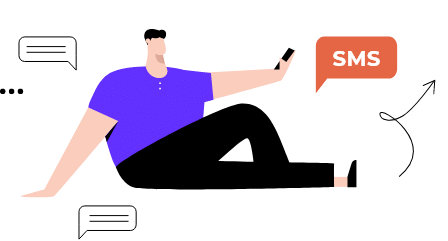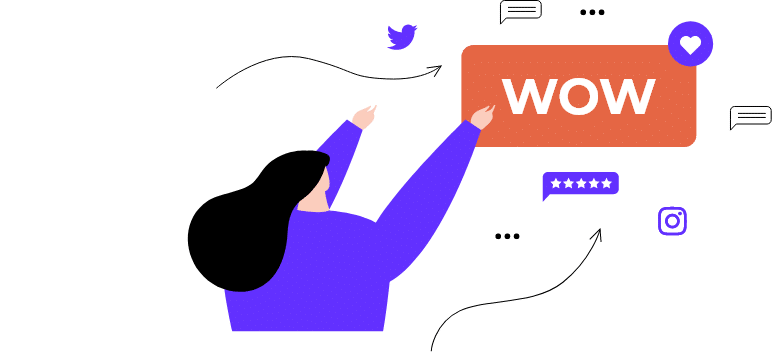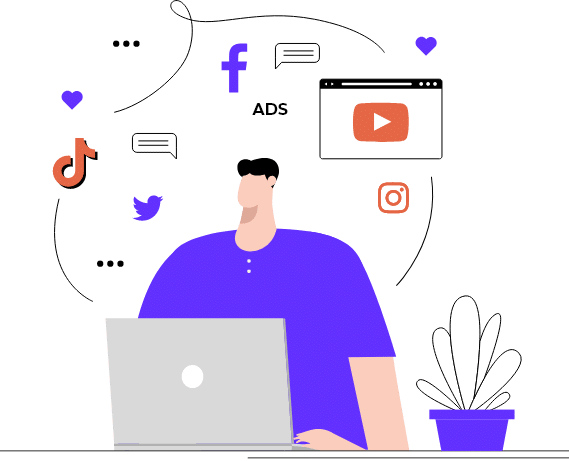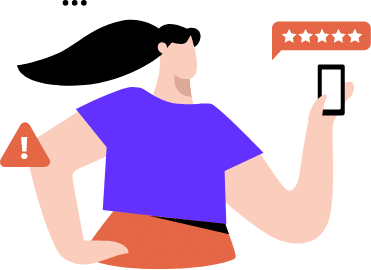How to Optimize Your Digital Marketing Strategy in Every Channel

What is digital marketing? Something that many brands and companies don’t realize is that digital marketing isn’t just one thing: it’s a collection of discrete strategies that need to be carefully tailored to a variety of channels, from your visual identity to Amazon ads to your company newsletter.
When it comes to your digital marketing strategy, it’s not enough to have an eye-catching website or a great influencer network. To capture the largest possible audience at the top of your sales funnel, you need a marketing strategy for every channel.
Successful online marketing requires not just driving clicks, but also keeping users and customers engaged once they’ve landed on your content. To that end, this is your guide to digital optimization: how to understand, develop, and execute a strategy for all digital channels.
01 How to Optimize Your Website Overall
Your website is your digital home. No matter how your potential audience first encounters your brand—on social media, through affiliate links, or from paid advertising—your ultimate goal is to drive them towards your site, where they’ll learn more about your goods and services, and, hopefully, make a purchase.


If you’re wondering, how do I optimize my website? As a digital marketer, you will need to work on two fronts:
- Create an attractive page with a clear statement of who you are, what you offer, and why they should make a purchase
- Optimize your website for search engines to drive more visibility and clicks. The next section on SEO Optimization will cover this huge topic).
These digital channels are deeply interdependent. Together, they help you to boost dwell time. But what is dwell time?
After a user finds your website via a search engine, it’s the length of time between clicking your page and returning to the search results. This number is important for search rankings. The stronger your content is, the better your search rankings are, and the more users will be exposed to your platform.
Of course, it’s also important for your Conversion Rate: the longer users spend on your site, the more likely it is they’ll make a purchase.
Let’s look at some specific strategies for honing the homepage to increase dwell time:
How to Optimize Website Content
When it comes to site optimizing, you’ll want to focus on both appearance and written content.
Your website needs to be formatted for digestibility, easy navigation, and guide your reader towards a CTA (Call To Action).
Format Your Site for Mobile
Half of your target audience is accessing your site from their smartphone.
Here are tips for both appearance and copy:
Design for Success
Make sure your page is quick to load. Did you know that users spend 70% more time on a website if it loads in 5 seconds rather than 19? Avoid unnecessary images and play-through videos so that your site loads quicker. This results in a more streamlined appearance and keeps visitors on your site for longer, improving your dwell time and your conversion rate.
Avoid stock images. Businesses that use stock images can appear inauthentic, which can dissuade your potential customer from sticking around. This becomes a glaring issue when your stock images are their first impression of your brand.
Make sure the site’s web design and navigation makes it easy for users to click where you want them to when using a mobile phone—even if they have big thumbs!
Create a favicon to show up next to your website’s title in a user’s tab or bookmarks. This reinforces your brand.
Take Care With Your Copy
Begin with an engaging intro. Your keywords should appear early on in your text.
Push content up the page, and get rid of gaps. This engages the user quickly to stay on your page.
Begin with an engaging intro. Your keywords should appear early on in your text.
Push content up the page, and get rid of gaps. This engages the user quickly to stay on your page.
Keep in mind that readers respond to content that gives a feeling of commonality with other people:
Testimonials help users relate to others, and ensures them that your product already works for people just like them.
Copy can also encourage users to jump on the bandwagon. They feel reassured when they know your product is a popular choice.
After you’ve created an attractive website with a clear message, the next step is making sure you get eyeballs on that content.
02 SEO Optimization
Another important factor in web page optimizing is Search Engine Optimization. SEO optimization is the science of improving your search rankings so that more users are captured at the top of your sales funnel. Websites at the top of the first results page get 42% of traffic. However, it’s not just about the clicks: better rankings also increase your brand’s credibility.
When it comes to SEO for websites, some may think that keywords are the only thing that matters. However, if you’re wondering how to SEO, there are several other factors that you need to consider, including your internal linking, external linking, and a number of technical applications.
If you’re looking for a Search Engine Optimization how to, then look no further.
SEO AND KEYWORDS
Although there are many factors that go into search rankings, keywords remain king. The goal is to target keywords that your website can rank for. When identifying keywords that you want to rank for, perform a competitive analysis of the search results to make sure you can rank for this term.
Websites at the top of the first results page get 42% of traffic.
How do you do a competitor analysis?

You can use the SEO tool MOZ to instantly look at your website’s Domain Authority (a scale of 0 to 100—0 being the least “authoritative” in Google’s eyes and 100 being the MOST authoritative). Based on your DA, you can see where your website falls compared to your competitors.

A strong Domain Authority in comparison to your competitors is how you will outrank your competition for keywords related to your business. Alternatively, you can use their keyword difficulty tool which will show the DA of all the sites ranking on page 1 for a given keyword.
Once you’ve pulled your DA alongside your competitors’:

Make sure the search results contain sites with similar domain authorities to your own site (DA within 10-15 points). If they do, you can likely rank for a term. If a site is beyond the range of 10-15 points, the keyword may be too difficult to rank for (at least initially).

Find keywords with good search volume and ideal keyword difficulty using tools such as SEMrush, Google Adwords, or Ahrefs.
 In addition, use LSI Keywords—keywords not directly related to your products or services that users might look up. This can help to increase traffic, too.
In addition, use LSI Keywords—keywords not directly related to your products or services that users might look up. This can help to increase traffic, too.
Internal Linking & SEO Outreach
DA measures the quantity of links going to a page, so when you include links to your own pages, you boost their search rankings. Likewise, when other people link to your page, the same is true.
Leverage internal linking strategically. Internal links are an essential strategy to make sure that authority (Page Authority & Domain Authority) is optimized and distributed throughout the site. The higher the DA, the quicker Google will crawl your site and rank you higher on search engines.


The anchor text of an internal link also tells a search engine that the page being linked to is relevant to the terms used, so this will improve ranking for the keywords used within the anchor text.

However, make sure that internal links are not over optimized — this will cost your digital strategy. There should be only 1 link to each page from a given page.
In addition to internal linking, use SEO Outreach, or link building. What is link building? It’s the process of creating inbound links that lead to your site. Just as influencers can help to direct users to your sales funnel, link building brings in new users. It can also play a crucial role in SEO.
If your DA is lower than your competitors’, a great way to grow its authority is by building its backlink profile through strategic SEO outreach to secure links on other sites that direct to your own. Let’s take a look at some SEO link building strategies:


Reach out to online blogs and content sites to secure backlinks by offering to contribute content, topic ideas, or other assets such as infographics or compelling stats.
If you have a brand new site, chances are you have a very low Domain Authority as you start from the ground up. Building links with targeted keywords that relate to your brand will help grow your overall domain authority over—time— to help you rank for keywords people are searching for that relate to your business.
Digital marketers have tactics to secure these backlinks correctly to guarantee the links directed towards your site are optimized in your brand’s favor.
Element Markup
Make sure your site is using schema.org to mark up elements. For example, if you are an e-commerce website, make sure you are using product schema to show the star rating, stock status, and price of the products in the search results (which are known as rich snippets). Rich snippets will help you generate more traffic because they allow for a higher click-through rate.

Avoid Technical Issues
When it comes to SEO, a variety of SEO technical issues can prevent your website from showing up in search engines—from a misplaced “/” in the code to the same page showing up at multiple URLs. Web searches can account for over 30% of your traffic—but only if it’s showing up in search engines! If you’re not sure if your website is indexed, you may need to check your html.
Web searches can account for over 30% of your traffic
Any one of the following can create a technical issue:
01
Duplicate page titles
02
Missing page titles, meta descriptions, and H1 tags
03
404s and links to redirected URLs
Consider your Images
Pretty images don’t just engage the senses. If you’re not sure how to optimize SEO for your page any further, pay attention to your images and videos:

Create alt image text. When you describe your images with alternative text, it helps accessibility for visually impaired users. It also boosts your images’ search rankings.

Make sure you focus on page speed on mobile. Google looks at the mobile page load speed score for rankings, so use the Google Page Speed Insights tool to see how you can make improvements to your mobile page load speed for each template on your website. Ideally you want to have a mobile score of 85+ to have the best positive impact on rankings.
If you’re not tech-savvy, consult a digital marketing agency to check your code.
Now that you know how to optimize a website, we’ll take a deeper look at design.
03 Creative & Graphic Design Marketing
When it comes to your online marketing strategy, the visual appeal of your website, social media channels, and YouTube channels can make an enormous impact. Graphic design marketing is therefore a huge part of your overall internet marketing optimization strategy—across all channels.
Why does it matter so much what your content looks like? Joe Hollerup, Creative Director of Power Digital Marketing, explains that “Images, videos and graphics can attract your visitors and persuade them emotionally to take action. That’s because 40% of people respond better to visual information than to text. It makes for a positive user experience.”
Images, videos and graphics can attract your visitors and persuade them emotionally to take action. That’s because 40% of people respond better to visual information than to text. It makes for a positive user experience.
How can you develop a design marketing strategy? You can imagine it as a three-step process:
01
Create a strong visual identity
02
Rigorously test your creative
03
Tailor your strategy to specific channels.
Let’s take a look at this process and what concrete strategies you can use to marry your graphic design and digital marketing.
1 DEVELOP A VISUAL IDENTITY
Images are powerful. To determine what specific colors, images, and aesthetic will best engage your audience, you can use data to guide your decision—but that can’t be the end all, be all of your process. Instead, consider your message, and how your design can best reinforce it.
Not sure where to start? Take advantage of Power Digital Marketing’s creative services to assist with your branding and design.

2 TEST IT TWICE
Once you’ve developed your visual identity, don’t fly blind! Instead, see how potential users resonate with it:

Always AB test your creative, whether it’s digital advertising, landing pages, or emails. Use the data to help decisions moving forward.

In particular, test static images versus gifs versus video to see what your audience reacts to.
Video has been known to win on engagement side, but it’s always worth testing because video isn’t always the absolute answer
![]()
Consider your existing audiences and how to best reach new target audiences. Everything should be intentional: your imagery should be consistent across all audiences, with modifications and variations that target specific demographics or stage in the buyer’s journey.
3 TAILOR IT TO THE DIGITAL MARKETING CHANNEL


There should be consistency across channels. Make sure consumers know which brand they’re looking at. This helps to build brand consistency and trust. After all, your ultimate goal isn’t clicks, but a loyal user base.

Consider developing brand guidelines so that you can ensure your messaging is consistent and in sync.

All digital marketing campaigns and ads on every channel (including all social media platforms) should look consistent in their design, but there are various user-friendly design elements which are different for each channel.
Once you’ve developed a strong website and consistent brand visual, you can start to think about converting engagement into sales.
04 Conversion Rate Optimization (CRO)
How do you measure your website’s success?
One common measure is conversion rate, also called CR and CVR. What is conversion rate? When users arrive at your website, you’re probably aiming at a specific outcome: more sales, newsletter subscribers, inquiries, etc. Your conversion rate is the percentage of visitors who complete that intended action.
What is a good conversion rate for your website traffic? That depends on your industry and your CTA.
If you’ve ever wondered, what is CRO? You can likely now guess that it’s the marketing techniques aimed at optimizing your conversion rate. For success in CRO marketing, John Saunders, VP of Technology at Power Digital Marketing, proposes three steps:

01
Identify your best (and worst!) performing pages
02
Focus on your home page
03
Optimize your website’s speed
Analyzing Traffic and CRO
Filter your most highly visited pages and overlay the lowest conversion rate. Then, put human eyeballs on those and look at how the traffic is getting to those pages. Consider which factors are causing users to bounce or leave quickly. Is it your copy? Your value proposition?
Put a mechanism in place to fix the problem, whether it’s a button or a clearer CTA.
Problems on these pages may be systemic within your website, so apply the lessons learned from this exercise to all your pages. This is data-driven marketing.

Revamping Your Home Page
When it comes to conversion optimization, your home page is the hero section of your website. If you’re unhappy with your CVR, this is an important place to focus your conversion marketing efforts. In order to improve your results, take the following steps:

Diagnose your home page. Does it provide the best information of all the pages on your website?

Improve your menu navigation. Make sure it’s easy to understand where the menu will take you.

Extend your appeal. Do you have different kinds of targets to appeal to different user types?

Hone your message. Marketing experts suggest applying the “5 second test” to your website: is your main message evident in just 5 seconds?
- Your homepage should have a clear Call to Action.
- That CTA should be easy to find, and should come up before a visitor has to start scrolling.

Display your credibility and social proof. If you don’t already have them, be sure to add:
- Testimonials
- Badges
- Logos of companies you’ve worked with
Website Speed
As we noted earlier, users spend more time on faster-loading websites. Use GTmetrix, a free tool that can help diagnose your website loading speed. If it’s slow to load, any of the following may be a contributing cause:
![]()
The size of the images being used
![]()
The amount of javascript on site
![]()
Tracking scripts
![]()
Uncompressed code/code in need of minification (CSS, java script, HTML)
![]()
The parsing of JavaScript needs to be deferred
![]()
Gzip compression needs to be enabled
![]()
Browser caching is not optimized
![]()
There are excessive redirects
![]()
You have not specified a cache validator
If these technical terms sound like a foreign language, Power Digital can extend a helping hand in conversion rate optimization services and other marketing objectives you have in place. We have the digital marketing tools and expertise you need.
05 Content Marketing Strategy
Now that you’ve optimized your webpage for SEO ranking and visual appeal, you can further develop your content strategy. What is content marketing? As you create copy, blog posts, and other written content for your website, you generate more opportunities to engage your audience, as well as new opportunities to incorporate keywords and improve Domain Authority through internal linking.
Successful content doesn’t just drive clicks. This results in a low dwell time and alienates potential users. Your true goal is keep your audience on your page.
At the same time, according to Alexa Engelhart, Director of Content & Strategy at Power Digital Marketing, creating excessive content can be a waste of resources. She reveals that “when it comes to content marketing blogs, you don’t need to be doing that much educating; the goal is to twist the knife and take care of your audience’s problem.” Creating too much content can actually be a waste of resources.
“when it comes to content marketing blogs, you don’t need to be doing that much educating; the goal is to twist the knife and take care of your audience’s problem.”
When it comes to web copy, make sure every page on your website has thought-out sale messaging that speaks to the target audience’s key pain points or desired outcomes. Take advantage of the following tips to improve your content:

Avoid generic titles and help the audience achieve their goals.

Create content with a specific goal in mind. Messaging needs to match the intent of that page.
![]()
Longer forms should link back to one of more transactional keywords on the main site.

If there is something in your service offering or industry and there’s a lot of keyword research around it, this doesn’t mean you should write a bunch of blog posts. Instead, create an evergreen page that lives in the navigation of your website.

Remember that landing pages are more conversion friendly when it comes to your CRO. Pepper your landing pages with testimonials, pricing, and CTAs.
Since keeping your audience engaged is the goal of content marketing, you need to ensure that your content is cleanly written, well-researched, and tailored to your company’s unique brand and voice. If honing that voice isn’t exactly your main service, enlist in professional content marketing services to develop content that truly reflects your offerings.
06 Social Media (Organic & Paid)
As you hone your content strategy, make sure that your social media marketing builds off the brand voice you’re working to establish. Social media impressions are increasingly important to sales, as 76% of consumers have purchased something they saw on a brand’s social media account. Although some consumers are skeptical of ads, organic social media impressions are an effective way to connect with them.
Growing your brand’s social media reach requires a clear content strategy and frequently posting. On which of the social media platforms should you share content most frequently? When it comes to posting native content and ads, the best channel depends on your industry, but consider:
Social media impressions are increasingly important to sales, as 76% of consumers have purchased something they saw on a brand’s social media account.
01
Make use of Facebook’s massive user base
02
Post on the still-growing Instagram platform
03
Create text for LinkedIn Spark to connect professionals with your services
Organic Social Media Strategy
No matter where you’re posting, focus on engaging your audience, not selling them. Marissa Heckman, Organic Social Media Account Manager at Power Digital Marketing, recommends that you strike a balance between engagement driving posts with the objective of connecting with your target audience and promoting posts about your brand: “Depending on the industry, we recommend 70% of content remain engagement-based and a maximum of 30% of content be promotional.”
“Depending on the industry, we recommend 70% of content remain engagement-based and a maximum of 30% of content be promotional.”

To engage your users, take the following steps:

Keep your brand voice and branding consistent and authentic. If you speak to everyone, you speak to no one. Understand your brand voice and what voice connects with your audience best.

Upgrade your visual presence. A social media presence now demands high quality imagery, videos, and graphic design. You have less than 5 seconds to grab a user’s attention. Your posts must stand out in the newsfeed. To remain professional and appear as a well-established brand, your branding should remain consistent through all posts. If you only have 5 seconds, make sure your branding is present, strong, and impressive.

Manage your post volume. Posting too frequently can exhaust your audience and lower performance, whereas posting too infrequently can affect the health of your account and lower performance.

Strengthen your relationships with your customers on social media. This goes beyond liking or replying back to the engagers on your social posts. Actively ask for their thoughts and opinions. Moreover, your interactions with them should be as personal and meaningful as possible. Do not be another generic brand that doesn’t take the time to make genuine connections with its customers.
To stand out in the crowded world of social media, work with Power Digital Marketing to develop a social media strategy that keeps your audience growing and engaged.
Paid Social Advertising
When it comes to digital marketing campaigns and advertising on social media, organic content isn’t the only way to engage users. Over half of social media users have purchased something based on paid advertising. However, social media ads can convert to more than sales: they also increase brand awareness and grow your follower count, reinforcing your organic content strategy.
When it comes to investing in paid media, many social media platforms’ targeting and audience segmentation tools allow you to reach more users than ever. When creating your digital strategy, use these tips to improve your results:
Over half of social media users have purchased something based on paid advertising.

Evaluate your creative versus your big competitors’. How does your visual and written content compare to theirs? Your followers and engagement? Adjust your strategy to compete.

Target a new audience. Your goal with paid ads is to find customers who are truly new prospects, not current customers. This drives the lifetime value of your investment.
Keep in mind that different social channels may require different strategies—different audience bases and models mean that your ads should be tailored to the specific platform you’re advertising on. If your strategy isn’t creating the CVR you’re hoping for, Power Digital Marketing can help you to hone your paid ads strategy.
07 Email Marketing
Your company’s newsletter and email advertisements are another essential part of growing and engaging your audience. Did you know the median return on investment for online e-mail marketing is 122%—four times higher than the ROI on any other kind of marketing campaign? With stats like that, email should be a key part of your overall strategy.
Are you wondering how to do email marketing? There are two important elements to your strategy: growing your subscriber base and creating successful campaigns. Let’s take a look:

To grow your subscriber base:

Make sure you have strategic opt-in points on your website. If there is no way to get on your list, people won’t be subscribing.

Test an exit vs entry pop up on your website. Go with whichever yields more subscribers.

The integration of your website and email service provider isn’t key. Third party apps like MailChimp make it easy to send emails from any address.
For successful campaigns:

Test different offers depending on the funnel.

See what your competitors are offering. Give your subscribers something a little bit better; otherwise, if they are price focused, they have no reason to go with you.

Segment your audience: make sure your emails are sent at the right time with the right message based on how users have recently engaged with your content.

In addition to inbound marketing, consider diving into SMS. Email is becoming an inbox flooder, so this digital channel is a great way to break through the clutter. Alexa Engelhart, Director of Content & Strategy at Power Digital Marketing, notes that for PDM clients, SMS is soon within the top three of their revenue sources for a given week. Are you curious to learn more about this new offshoot of email marketing? Learn more about Power Digital Marketing’s email marketing services.
08 PR Strategy
Working with a PR firm can help widen your sales funnel, establish your credibility, and improve your SEO rankings. Online media placements that include links and brand mentions are great signals to Google to support your overall SEO strategy and build your backlink profile through organic, relevant, and high-quality third-party content sites.
What else can a public relations agency do for you? Sam Wormser, VP of Relations at Power Digital Marketing, notes that “if you are struggling to bring new users to your website and fill your retargeting pools, online press placements are a great way to drive referral and organic traffic to your site.” As a top-of-funnel channel that supports overall brand awareness, PR can help introduce new potential customers that you can nurture through PPC, Paid Social, email, display, and search engine marketing.
“if you are struggling to bring new users to your website and fill your retargeting pools, online press placements are a great way to drive referral and organic traffic to your site.”
To make the most of your work with your PR company, make sure your PR campaign is working synergistically with your other digital marketing services. For example:

Use PR to strengthen your website. Use PR to strengthen your website. If your conversion rate is not where you want it to be and you lack reviews, online media placements can serve as great third-party endorsements. 76% of consumers trust online reviews as much as in-person recommendations. Use this to your benefit, noting reviews on specific product pages to help the user make a purchase decision.

Tie in your PR efforts with Paid Social. Use a third-party tool that drives users who click on an ad to a carbon copy of the press placement. This serves as a third-party endorsement and should include a customizable CTA to drive traffic to your site. These typically have a high CTR (click-through rate) and serve as a great cold prospecting tool on Facebook to introduce people to the brand.

Use press placements across platforms. They serve as great testimonials and credibility builders for new product launches and new brands. They can be leveraged on social, Paid Social, email, and your website to give social proof to the brand.
09 Influencer Marketing
Influencer and affiliate marketing is similar to PR in several ways. Are your top-of-funnel channels bringing new users to the website, then into the middle and bottom of your funnel? If you are running out of users to remarket to and exhausting your middle of funnel prospects and bottom of funnel customers, working with influencers is a great way to introduce your brand to new potential customers and bring them to your website to fill your middle of funnel.
Close to half of consumers look to influencers when deciding where to make a purchase. For example, Instagram influencer marketing takes advantage of influencer platforms that reach huge audiences. When you partner with a social media influencer, they extend their credibility to your brand. This is just one of the reasons why this kind of marketing is only growing.
Close to half of consumers look to influencers when deciding where to make a purchase.
Content Creation

There are many other benefits to influencer marketing. Do you have high quality content (photos and video content) to use across your marketing channels? If not, influencer marketing is a great way to generate high quality content assets that you can repurpose for other channels, and is more cost-effective and diverse than organized photoshoots.
Do you have a robust number of reviews on your website or other online retailers? If you have limited reviews, an influencer campaign can likewise help to generate authentic reviews for your website and for Amazon. Sam Wormser, VP of Relations at Power Digital Marketing, recommends having influencers order products right from Amazon, reimbursing them, and having them leave a review.
To make the most of your work with your PR company, make sure your PR campaign is working synergistically with your other digital marketing services. For example:

Have the influencer sign an image rights release agreement so you can repurpose their content for other marketing channels. Sometimes this requires an additional fee, but is worth the value of unique, compelling, and high quality content.

Provide a creative brief and campaign agreement for each influencer partner (especially paid partners) so there are clear content and timeline expectations and commitments from both parties.

Put reviews in your video content. If you’re already using video in your advertising efforts on Facebook and Instagram, this is an area to use the content from influencer partners. A great influencer caption can double as a great review.
10 Pay Per Click Marketing (PPC) & Paid Search
What is Pay Per Click Advertising? It’s a way of partnering with search engines to promote your website. When you create an ad to run on Google, you pay when someone clicks it. Google Ads can be a valuable tool to generate new views, and it also provides you with a powerful Google analytics tool so that you can see what’s working.
Google Ads gives advertisers the unique ability to see exactly what users search for when serving them your ads. Closely monitor your search terms. Alex Fleming, Director of Pay-Per-Click marketing at Power Digital Marketing, notes that “Google analytics provides strong insights into the psychology of consumers to help make adjustments to not only your ad campaigns but also website copy.”
Search terms that perform well should be added to your digital media campaigns so that your budget and where that traffic is directed are intentional. On the flip side, if a search term is irrelevant to your product or service—say a user searches for sweaters when you sell shoes—it should be added as a negative keyword to prevent ads from serving similar searches in the future.

“Google analytics provides strong insights into the psychology of consumers to help make adjustments to not only your ad campaigns but also website copy.”
To make the most of pay per click marketing, use the following tips:

Make frequent bid adjustments. Every keyword has a bid—the amount of money you’re willing to spend on a click from that specific keyword. Bids can be adjusted based on their performance. If a specific keyword is driving great results, increase your bid to improve the likelihood that your ads will appear the next time that keyword is searched. Poor performing keywords should have much lower bids.

Know what your competitors do. Google Ads has an Auction Insights report which lists which competitors are serving ads for your keyword sets and how often. The more competitors in this report, the more competitive each ad auction is and the more budget that will be required to get adequate exposure.

Do your competitors bid on your Brand Name? If so, consider running ads for your own brand name to make sure your competitors aren’t stealing your traffic!

Levers, levers, levers. Use Google Ads’ reporting insights on your prospective customers’ age ranges, gender, household income tiers, and devices. Use Affinity, In-Market and Similar To Audiences in your search campaigns to adjust your bids for specific demographics — this helps increase conversion rate.
Google Ads continues to get better understand which consumers are most likely to convert on your website, so be sure to lean into marketing automation bidding strategies and ad formats.
The ability to pull levers based on analytics and put your best advertising foot forward is what separates a healthy account from one that should probably be audited. If you’re struggling to make money with pay per click, call Power Digital Marketing.
11 Amazon Marketing
80 Million Americans are Amazon Prime members. If you sell your products through Amazon’s sales channels, you have access to that massive network. The only catch? In a crowded marketplace, it can be difficult to come up with an Amazon strategy that boosts your product to the first page of search results.
A successful Amazon marketing plan has much in common with what you’ve already learned: content—both visual and written—matters, but so does keyword optimization.
80 Million Americans are Amazon Prime members
The first step in Amazon marketing is to register your brand. From there, improving your content will greatly boost your conversion rate. Use the following strategies:

Focus on great copy, and get a custom design for your brand page that is consistent with your visual identity.

Optimize bullet points and titles. Choosing the right keywords is super important. Do competitor research and use analytics to focus your phrasing. This is the best way to grow in the long term.

If you are already running ads on Amazon or other marketing channels, use the new Amazon DSP Attribution Tool to attribute outside traffic to Amazon sales.
Are you looking for an Amazon marketing agency? Power Digital Marketing’s Amazon Marketing services can help boost your product in search results.
12 YouTube Marketing
Internet video viewing is already up 35% in the last year, and that number is only rising. Therefore, content on YouTube can help to redirect users to your site, as well as create brand awareness. However, it’s not enough to make one video and stick it on YouTube. For real success on this channel, you need to build a full user journey through your YouTube channel with a series of assets that:
Internet video viewing is already up 35% in the last year, and that number is only rising.
01
Tell your brand story
02
Provide an overview of your product or service in detail
03
Add credibility through testimonials
04
Provide viewers incentive to convert with offers
Perhaps it goes without saying that it’s worth investing in creative services to develop engaging, compelling content that is consistent with your brand’s voice. But beyond creating great content, as with every other strategy, your YouTube marketing strategy needs to promote your videos in search results to capture more views.
HOW TO PROMOTE YOUR YOUTUBE CHANNEL WITH KEYWORDS
To maximize your success with keywords, use the following tips:

Perform keyword research with a tool like KeywordTool.io to see the search volume for keywords on YouTube, then incorporate those terms into your video title and tags.

YouTube’s Custom Intent Keyword Targeting can target individuals that are likely to convert on YouTube because they actively search for your product or service on Google, and you’ll be able to get in front of these people for cents on the dollar.

Write descriptions of at least 250 words and include the target keywords along with a link to a relevant page on your site for each video. Google will use this when ranking videos, and some viewers will read the description, so it’s good to summarize the topics discussed in the video as well as the keywords.
Additional Tips
With YouTube, there are a few tricks to marrying your video with text and redirects to your website:

Accompany your video ads with Display ads on YouTube, this improves your chances that a viewer will click through to visit your site.

Use annotations within the video to send people to the website. Most people do not read the description of the video, but annotations can be seen while watching the videos.
Include links or CTAs to push users from YouTube to your website.

Pay attention to metrics around video engagement and watch rates along with views and thumbs ups. Google will rank videos higher that have better watch rates in terms of initial views and the percentage of video watched. Use the video analytics tool to see where you can make improvements to the content so that more users watch the full video. This will result in higher rankings.
13 Your Holistic Digital Marketing Strategy
As you can see from the many pieces of a digital marketing tactic or strategy, success online requires a multi-tier approach. At the very least, you work on three fronts:
01
Create great content that’s consistent with your brand’s voice and identity
02
Promote that content through SEO Optimization
03
Use analytics to constantly refine your strategy for content creation and SEO
Of course, you actually work on more than three fronts, since each channel demands its own strategy. As you develop your digital marketing strategy in each channel, you’ll increasingly learn lessons about what works (and what, of course, doesn’t). Therefore, applying the lessons learned on Instagram could help you to improve your Amazon sales. However, you may find that the same strategy actually fails when you try it out on another channel.
It’s a rare person who has excellent writing and graphic design skills, a deep knowledge of SEO, and the data savviness to understand analytics and take appropriate action. If you’ve relied on a single marketing guru for too long, or tried to do it all in-house, you may not have the conversion rate you hope for.
If you’re looking for a one-stop shop for all your marketing needs, Power Digital Marketing is here to help. Whether you’re looking for a full-scale rebrand, and refresh to your graphic design, or an across-the-board SEO effort, our experts have the creative vision and technical knowledge to get you the digital marketing results you’ve been looking for.

Resources
Schema: https://schema.org/
GTmetrix: https://gtmetrix.com/
Keyword Tool: http://keywordtool.io/
Ahrefs: https://ahrefs.com/
SEMrush: https://www.semrush.com/
Sources
MediaPost. Mobile Online Video Viewing Will Soar 35% This Year. https://www.mediapost.com/publications/article/304337/mobile-online-video-viewing-will-soar-35-this-yea.html
The Motley Fool. How Many Americans are Amazon Prime Members? https://www.fool.com/investing/2017/04/26/how-many-americans-are-amazon-prime-members.aspx
Digital Marketing Institute. 20 Influencer Marketing Statistics That Will Surprise You. https://digitalmarketinginstitute.com/en-us/blog/20-influencer-marketing-statistics-that-will-surprise-you
BrightLocal. Local Consumer Review Survey 2019. https://www.brightlocal.com/research/local-consumer-review-survey/
Lyfe Marketing. Email Marketing ROI. https://www.lyfemarketing.com/blog/email-marketing-roi/
Survey Monkey. 74% of People Are Tired of Social Media Ads—But They’re Effective. https://www.surveymonkey.com/curiosity/74-of-people-are-tired-of-social-media-ads-but-theyre-effective/
Business Wire. New Curulate Survey Finds 76% of Consumers Purchase Products They Discover on Social Media. https://www.businesswire.com/news/home/20171115006040/en/New-Survey-Curalate-Finds-76-Consumers-Purchase
UIE. 5 Second Tests. https://articles.uie.com/five_second_test/
Clear Voice. Importance of Brand Consistency. https://www.clearvoice.com/blog/brand-consistency-why-its-so-important-how-to-achieve-it/
Hobo. How Many Alt Words in Alt Text for Google? https://www.hobo-web.co.uk/how-many-words-in-alt-text-for-google-yahoo-bing/
Neil Patel. How to Get Google to Instantly Index Your New Website. https://neilpatel.com/blog/google-index/
The Manifest. How to Use Latent Semantic Indexing Keywords to Boost Your SEO.
https://themanifest.com/digital-marketing/how-use-latent-semantic-indexing-keywords-boost-your-seo
Impact. How Important Is a Top Listing In Google? (And Why?) https://www.impactbnd.com/blog/important-top-listing-google
Content Marketing Institute. Say No to Stock Photography and Create Authentic Images.
https://contentmarketinginstitute.com/2015/06/create-authentic-images/
Unbounce. 7 Page Speed Stats Every Marketer Should Know.
https://unbounce.com/landing-pages/7-page-speed-stats-for-marketers/
Search Engine Journal. What Is Dwell Time & Why It Matters for SEO.
https://www.searchenginejournal.com/dwell-time-seo/294471/#close

 Wondering how to find influencers? Today, you don’t have to comb social media yourself, but can instead take advantage of Power Digital Marketing’s
Wondering how to find influencers? Today, you don’t have to comb social media yourself, but can instead take advantage of Power Digital Marketing’s 

















